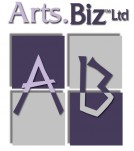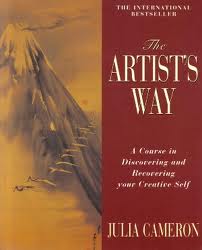How many times have I heard “But it’s not a real job.” Or better yet when I tell people Im an artist they ask “Ok, so what else do you do, like what’s your ‘real’ job?”
Some say that it isn’t a realistic career choice, and the myth of the “starving artist” stereotype is still very much alive and kicking? Its certainly not easy being a successful fine artist (someone who makes a living by creating original, one-off pieces of art) but some people do succeed with it. New Zealand is no different to anywhere else in that we have full time fine artists here too. Think Colin McCahon, Ralph Hotere, Michael Smithers, Dick Frizzell and so on. Being a full time artist is just like any other self employed role, you need to adjust your lifestyle to the fluctuations of the income and be prepared to do things that we call your “bread and butter.” That can be either working part time or creating a line of goods or services that sell easily and make you a regular income. I myself work part time in an art gallery and at times have taught night classes in art as well as mentored other artists to help make a regular income as well as having a merchandise range from my artwork so I can continue to practice my art and not worry about when the next big sale might be. I have been a full time artist but that’s another story, things can happen in life where you have to reassess if it’s for you or not. Working in art galleries has allowed me to see the other side of the arts business and meet people who have become influential to my art whom Id never likely to have met in my studio at home so Im reluctant to give it up. Only a handful of artists will make it to the level of the four artists I just mentioned, it takes a lot of hard work, the ability to market yourself, a lot of talent and certainly some luck is involved also. So what else can you do in the arts field?
A career in art is not limited to being a painter or sculptor. Behind every piece of art in the media or magazines for instance, there’s a graphic or commercial artist. Graphic artists put the magazines together; illustrators draw the cartoons and graphics. There are website designers and computer-graphic artists as computers don’t draw the images themselves; they’re just the tool, a modern version of a paint brush! And what about animation? There is also film, TV, and stage set building. We have world class facilities here in New Zealand, Weta Workshop for instance, who were behind Lord of the Rings and Avatar. There needs to be someone developing things like computer games and graphics for your phone, the list is endless. You can also do what I do and work in an art gallery or museum. Teaching art is a great way to stay within the creative industries and then there is also art therapy. Some artists get paid to do mural painting and we can’t forget about face painting, a summer job I did as a teenager to earn a bit of cash at a local mall.
There is also photography, interior and landscape design, shop-window design or window dressing, a job I trained in also, back in the days when I believed what I was being told in that fine art wasn’t a real a job! We need framers for our work so framing can be an option. Clothing design, look at all our successful designers in New Zealand. We always need someone to design our furniture and what about lighting design. Then there is architecture and engineering. Hairdressing is a creative sector, and yes I did that too, but again that’s another story for another day! These all require creative skills and, even if in your heart you long to be a fine artist, working in any of these fields will complement what you do at your easel in your 'own' time.
Part of being a successful artist is being able to sell yourself, good marketing skills are so important. The world will rarely come to you; they don’t know you are there, so you need to let them know you are. In this day and age a web presence is almost a must. Having a website to showcase your art allows the whole world to see you and is also useful when you want to show someone your latest work, much better than lugging a photo album around with you! I personally use webwidgets for my site. Theyre affordable, helpful and easy to use and give you the control to change things yourself, which is important for artists to be able to do.
Art will not always about making money although we need that to survive and to buy more supplies so we can keep on creating. You have to decide what's more important to you: money or having a job/career you thoroughly enjoy. Assess your priorities and make your choices accordingly. Do without rather than go into debt for a non-essential item or trip (and take a critical look at what you consider essential). Wouldn’t you rather be able to say: that you lived an interesting, creative life or that you lived in a huge house had a flash new car and the latest fashions? Would you regret not finding more time for your art?
Some people choose a job simply because it pays the bills and leaves them with plenty of time to pursue a fine-art career part time whether its in the arts industry or not and if this works for you then all good, the best of both worlds perhaps? It takes a lot of determination and hard work to make a career as a fine artist. You need to create paintings people want to buy, some see it as selling out to paint stuff that goes with someone else’s curtains. But I think you need to be realistic, if you have a studio full of work that’s not moving because it’s all your heart and soul type stuff then you’re going to have to rethink things if you want to make money from this career. I find its best to do acombination of commercial stuff and some from your heart and soul and then you are more likely to be successful. If you manage to make it to be a top artist you can paint what you want to your hearts content, make it your goal!

